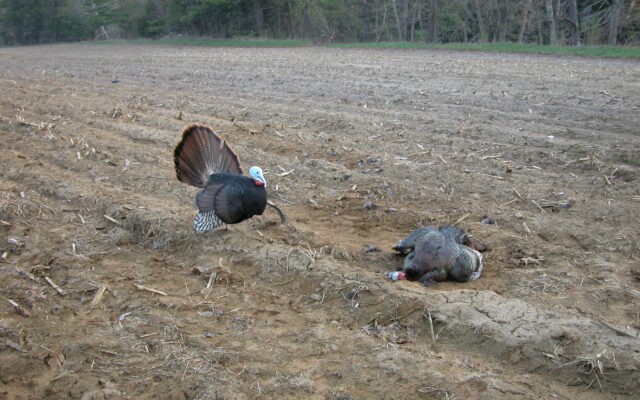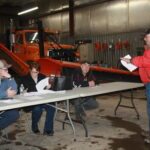
Aroostook County sportsmen wait impatiently throughout April and early May for snow to melt and ice on local lakes to disintegrate.
Up until about a decade ago, spring trolling was the main goal, but now that the transplanted wild turkey flocks have kept growing and spreading, regional hunters are anxious to get into the fields and forest. The number of gobbler gunners grows each year since area hunting zones one through six are open for several weeks for a spring and fall season.
Youth day is April 29, with the regular season running from May 1 to June 3, allowing Crown of Maine outdoorsmen to shoot one bearded turkey. Shotguns and bows are legal weapons and starting this year crossbows may be used for spring gobblers. Many area hunters will own much of the equipment needed to hunt turkey, especially if they are waterfowl hunters.
A 12-gauge, which fires 3- or 3-½ inch shells, and camo clothing, including gloves and a facemask, are a good starting point.
Newcomers to the sport will need to purchase a call; there are four main styles and dozens of models, but there’s no question that an electronic caller is the way to go until you learn and practice with one of the manual mouth or hand-operated models. The other excellent option is to coax a friend who’s an experienced caller to join you and be a tutor. There are other pieces of gear that will contribute to camouflage, comfort and convenience, but aren’t essential for rookies.
In my personal experience, and to most professional guides and longtime turkey hunters for any and all species across the U.S., realistic decoys and proper setup are essential to tagging a big Tom. Calling may help entice birds to investigate and move to your setup location, but it will be the “fake fowl” that ends up bringing them within shotgun or bow range. Also, the decoys will help divert some of the keen-eyed gobblers away from a hunter’s hiding spot.

This big Tom turkey came running across the field to challenge the male decoy that was standing near a hen turkey decoy, not shown in the photo. The downed bird was only 12 yards from the hunter and 3 feet from the decoy. (Courtesy of Bill Graves)
There has to be at least one hen decoy, because after all, it’s mating season and the big, long-beard strutting toms desire company. A very common and productive setup includes a hen and a jake decoy; jakes are current-year, young male turkeys. A real jake or older tom will approach the pair of decoys with intent of running the jake off and claiming the hen for his own harem. Actual attacks will often occur as the real gobblers strike the decoy with wing smashes and sharp spurs.
My preferred setup includes either of two combos of three decoys each; a hen and two jakes, or one jake and two hens, one of which is in the form or position referred to as a breeder or mating hen. A lot of experienced turkey hunters use a hen and a fanned-out tom, or even add a jake to the duet. All of these are supposed to inspire another long-beard to approach and scare off the other feathered suiters to claim the hen as his own mate.
A turkey decoy can be purchased as cheaply as $15, but the better the color and detail are, the cost increases. There are also several decoys that actually move via special motion stakes or remote control, and of course there are two- and three-bird combo packages. Expect to pay more than $200 for high-end products. Consider carefully just how far from the vehicle you will be walking and carrying gear, and if you will be hunting alone. Lightweight foam or inflatable decoys may be a great option.
Redhead, Flextone and Higdon all offer multi-decoy packages at mid-range prices while Avian X produces several high-end single birds and combos that are truly realistic. You get what you pay for, as is the case with most outdoor products, but in my opinion decoys are crucial to constant success so buy the best you can afford.
Scouting is essential to locate where the turkey flocks are roosting, feeding and their travel trails, and the wet muddy conditions beleaguer Aroostook hunters for the first week or so of the season. Nonetheless, it’s time to gather gear, especially a set of realistic decoys, and match wits with Maine’s largest gamebird.







